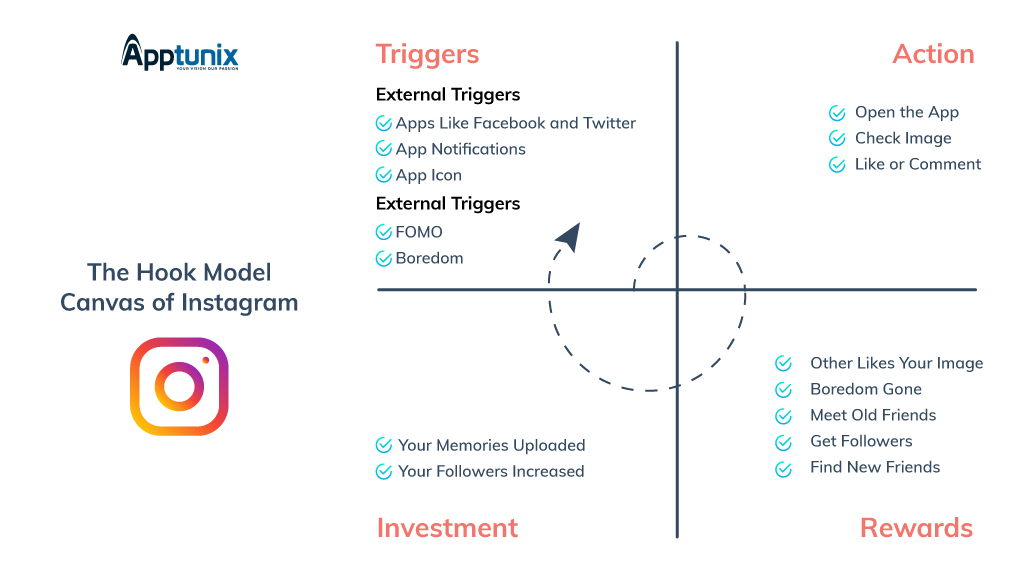The success of a UX designer is measured not by the aesthetics we create but by the habits we cultivate among users. The journey of molding user habits through design is nuanced, much like the realization that productivity isn’t solely about the tools but how they’re used.
Understanding the Essence of Habit-Forming Design
Why is UX design important? This question echoes in the corridors of tech companies and startups, particularly in the bustling world of digital products. The answer to this question lies in the subtle art of creating digital products that become an intrinsic part of users’ lives. It’s about crafting experiences that users don’t just need but want to engage with habitually.
For UX designers in India, this involves an intricate dance of cultural understanding, technological prowess, and psychological insight. It’s about tapping into the user’s daily routine and embedding your product as a seemingly indispensable part.
The Hook Model: A UX Designer’s Compass
At the heart of habit-forming products lies the Hook Model written by Nir Eyal. It’s a cycle of trigger, action, variable reward, and investment. Think about the apps you use daily. What keeps bringing you back? Is it the convenience, the pleasure, the social connection? Understanding these hooks is crucial.
Trigger: What prompts the user to use your product? Is it an external cue or an internal desire? For instance, the buzz of a notification or the feeling of boredom.
Action: Using the product must be frictionless, almost automatic. Consider the swipe-to-refresh action in social media apps; it’s simple yet satisfying.
Variable Reward: Humans crave novelty and unpredictability. Using variable rewards, you captivate users with varied content, unexpected rewards, or new features that intrigue them. Think about the scratch cards Google Pay used to give when they launched in India or what Instagram throws at you when you keep scrolling for random content.
Investment: When users invest time, data, or emotions into your product, they’re more likely to return. It’s a sense of ownership and personalization.

Designing for Cultural Nuances: A Lesson from India
In a country as diverse as India, we, the UX designers, face a unique challenge. Designing habit-forming products here isn’t just about understanding technology; it’s about understanding people. The cultural nuances, the multitude of languages, and the varying digital literacy levels are critical in how a product is perceived and used.
Empathy: The UX Designer’s Superpower
Empathy is at the core of habit-forming design. It’s about stepping into the shoes of your users and understanding their daily challenges, joys, and routines. This emotional connection is what turns a regular user into a loyal one. This becomes even more crucial for UX designers in India, where inspirational and cultural elements are deeply ingrained.
Use this template by Hubspot to design your users’ journey. https://blog.hubspot.com/service/customer-journey-map
Storytelling: Weaving a Digital Tale
Every product tells a story. The best habit-forming products weave this story so seamlessly into their design that users feel a part of it. It’s about creating a narrative that resonates with your users, one that they want to return to, day after day.
Simplicity: The Ultimate Sophistication
In the words of Leonardo da Vinci, “Simplicity is the ultimate sophistication.” Simplicity couldn’t be more accurate for UX design. The simpler the user journey, the more likely it is to become a habit. Simplicity doesn’t mean under-designing but designing so the complexity is hidden beneath an intuitive and straightforward interface.
Feedback Loops: The Continuous Conversation
Establishing a loop of feedback and iteration keeps the product in sync with user needs and expectations, fostering a habit-forming relationship.

Ethical Design: A Responsibility
With great power comes great responsibility. Habit-forming design should never exploit user vulnerabilities. Ethical design practices ensure that while the product becomes a habit, it respects the user’s autonomy and well-being.
Conclusion: The UX Designer’s Journey
In conclusion, creating habit-forming digital products is an art and science that goes beyond the conventional boundaries of design. It’s about understanding human psychology, respecting cultural nuances, and continuously evolving with user feedback. The goal is to create a product and cultivate an experience that becomes valuable to the user’s daily life. It’s a journey, much like the quest for productivity, where the real magic lies in the subtleties and nuances of design.